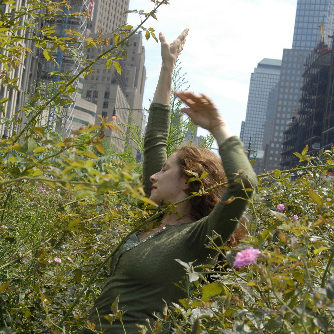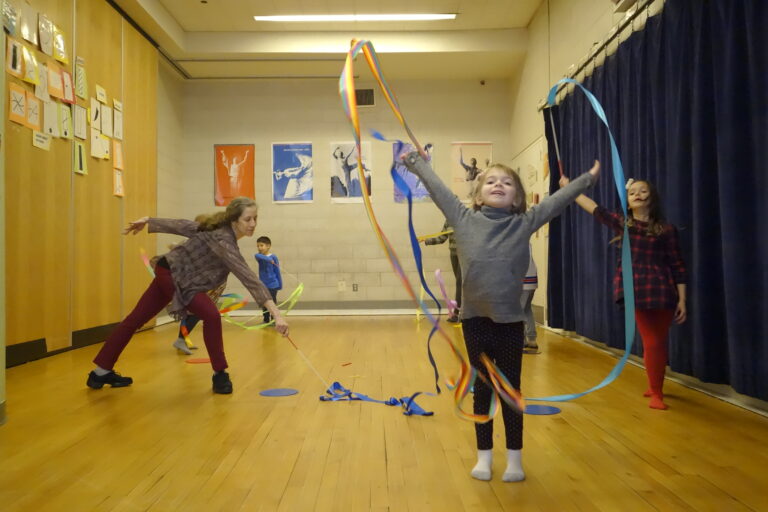DEL Lab Schools Feature: Catherine Gallant
Highlighting 2023 DEL Lab School recipient: Catherine Gallant!

Catherine Gallant has been teaching at P.S. 89 in Lower Manhattan since 1998 when she created the dance program with an emergent curriculum directly inspired by the DEL Model. She primarily works with grades Pre-K – 5, and also taught middle school students there from 2002-2006. At the end of December, Catherine will finally leave P.S. 89, her home away from home for the last 25 years!
Catherine was the assistant director at the Harkness Dance Center (1994-96) during the time that DEL was just beginning. She was very fortunate to study with DEL Founder Jody Gottfried Arnhold as well as Ann Biddle, Barbara Bashaw, Kathleen Isaac and Kyle Haver among others who allowed her to understand how to utilize the work she was already exploring as an artist/educator.
She began to teach what she wanted to learn more about. Her main goal has been to bring all students to view themselves as generators of their own movement vocabulary through the language of applied Laban Movement Analysis (LMA). At P.S. 89, learners have had ongoing opportunities to mine their own imaginative responses to music, visual arts, literacy, history, science and social studies through dance making.

We asked Catherine to answer the following questions:
A. What is one of the biggest learnings or takeaways that has stuck with you from a DEL Course/Workshop?
DEL provides the freedom and also structure to support imagination in the creative process.
The concept of “teaching what you’d like to learn” positions the educator as a lifelong learner in collaboration with students. This is one of the main ideas that always brings me back to a place of curiosity and openness to new perspectives.
B. How do you apply the DEL model in your teaching environment? Tell us more about how you use what you’ve learned from DEL in your real life.
The DEL Model gives my students the tools to describe the detailed subtleties of their movement as they express their own unique movement vocabulary.
I use my DEL learning experiences to look closely as I negotiate non-verbal communication in many different contexts, at home dancing with my family, when observing people in transit, or in deep stillness, and in the creation of my own choreographic projects.
For me the positive and empowering impact of DEL is always there.
C. At the center of the DEL Model is the Teacher’s Heart, which represents the core artistic and philosophical values and beliefs of every dance educator. Catherine shared:
“My Teacher’s Heart is filled with endless curiosity that I share with my students, so that we can explore in a quest to create something completely new that no one has ever seen before.
As I step away from this daily interaction with the authentic artistry and creative spirit of children, I will continue to teach and learn from the next generation of dance educators as faculty member of DEL and at Hunter College’s Arnhold Graduate Dance Education Program.”
